
|
Astronomy Picture Of the Day (APOD)
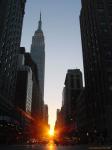 A Manhattan Sunset
A Manhattan Sunset
28.05.2004
Today, if it is clear, Manhattan will flood dramatically with sunlight just as the Sun sets precisely on the centerline of every street. Usually, the tall buildings that line the gridded streets of New York City's tallest borough will hide the setting Sun.
 Two Comets in Southern Skies
Two Comets in Southern Skies
27.05.2004
Wielding a very wide-angle lens, astronomer Gordon Garradd was able to capture two naked-eye comets in one picture looking toward the west from Loomberah, New South Wales, Australia. At the far left lies comet C/2002 T7 (LINEAR) and at the far right, comet C/2001 Q4 (NEAT).
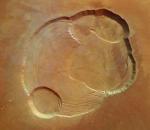 At the Summit of Olympus Mons
At the Summit of Olympus Mons
26.05.2004
From martian orbit, the Mars Express cameras looked down on the largest volcano in the solar system. The result was this stunningly detailed overhead view of the caldera or summit crater region of Olympus Mons.
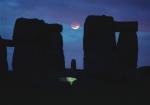 Moon Between the Stones
Moon Between the Stones
25.05.2004
Despite clouds and rain showers astronomer Phillip Perkins managed to spot a reddened, eclipsed Moon between the stones of this well known monument to Sun during May's total lunar eclipse, from Stonehenge, England.
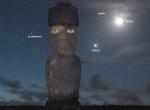 Planets Over Easter Island
Planets Over Easter Island
24.05.2004
It isn't every day that planets line up behind a stone giant. For one thing, it helps to have a good planet line-up, such as occurred in the sky just last month. For another, it helps to be on Easter Island, where over 800 large stone statues exist.
 Working in Space
Working in Space
23.05.2004
High above planet Earth, a human helps an ailing machine. The machine, in this potentially touching story, is the Hubble Space Telescope, which is not in the picture. The human is Astronaut Steven L.
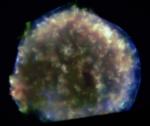 X Rays From Tycho s Supernova Remnant
X Rays From Tycho s Supernova Remnant
22.05.2004
In 1572, Danish astronomer Tycho Brahe recorded the sudden appearance of a bright new star in the constellation Cassiopeia. The new star faded from view over a period of months and is believed to have been a supernova, one of the last stellar explosions seen in our Milky Way galaxy.
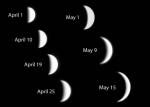 Phases of Venus
Phases of Venus
21.05.2004
Venus is currently falling out of the western evening sky. Second planet from the Sun and third brightest celestial object after the Sun and Moon, Venus has been appreciated by casual sky gazers as a brilliant beacon above the horizon after sunset. But telescopic images have also revealed its dramatic phases.
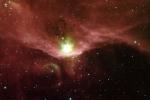 Sharpless 140
Sharpless 140
20.05.2004
Three young, massive stars will eventually emerge from this natal cloud of dust and gas, but their presence is already revealed in this false-color image from the Spitzer Space Telescope. The picture offers...
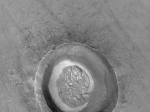 Brain Crater on Mars
Brain Crater on Mars
19.05.2004
What caused this unusual looking crater floor on Mars? Appearing at first glance to resemble the human brain, the natural phenomena that created the unusual texture on the floor of this Martian impact crater are currently under investigation. The light colored region surrounding the brain-textured region is likely sand dunes sculpted by winds.
|
January February March April May June July August September October November December |
|||||||||||||||||||||||||||||||||||||||||||||||||